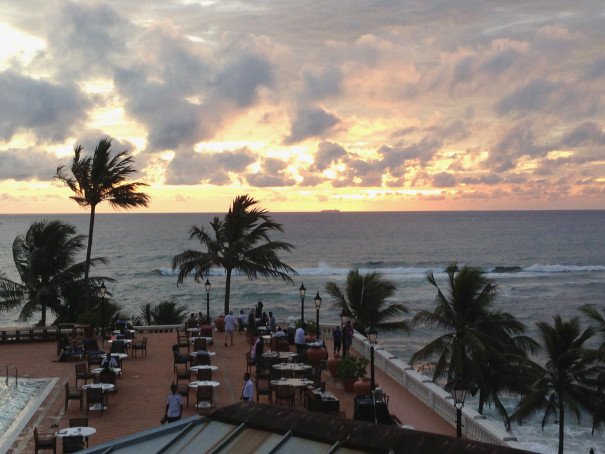
Acquiring a Taste for Sri Lankan Bourbon

Acquiring a Taste for Sri Lankan Bourbon
I attend a wedding in Sri Lanka, at the Mount Lavinia Hotel in Dehiwala-Mount Lavinia—a suburb south of Colombo—on a sweaty humid day in August.
Once the residence of “King Tom” or Sir Thomas Maitland, His Majesty’s second British Governor of Ceylon, Mount Lavinia is a grand, Colonial white box with wooden window shutters, conceived by King Tom as a “pleasure dome” to escape the pressures of governing. We sit in neat rows on the terrace, where the Governor and other dignitaries no doubt sipped their gin and tonics at sundown, enjoying the view of Lavinia Beach below, curving northwards towards the smoggy core of Sri Lanka’s capital. Today, also visible in the Indian Ocean just west of the city, are the jagged steel outlines of a China-backed harbor expansion project.
Mindful of the heat, the Sri Lankan-Austrian bride and Anglo-German groom want to keep the ceremony—already featuring readings in Sinhalese, English and German—on the shorter side. But the Dutch Reformed Church minister, who was allotted 15 minutes, ends his sermon on the far side of 30, as beads of sweat on the groom’s neck began to pool on his collar.
I am introduced to arrack, Sri Lanka’s signature spirit, later that night at the reception on the hotel beach. It is a strong and dark and a little sweet like rum, but less user-friendly; it has more of burning kick, and a strong, mysterious bouquet. It’s distilled from nectar drawn from coconut flowers, so I begin to refer to it as coconut bourbon. (Sri Lankan arrack, by the way, is not to be confused with arak, the anise-based drink popular in the Mediterranean and North Africa, nor Batavia arrack, the Indonesian spirit distilled from sugar cane and red rice.)
Close to midnight, the guests gather on the sand to watch fireworks. The harbor development a few miles up the coast made the ocean here too rough for swimming — and the beach too narrow for the newlyweds to ride in on elephants—but a few of us can’t resist, and hover at the surf to dip our feet, shoes and drinks in hand. I hold the bottom of my sari (purchased in Colombo for the occasion) in one hand and a glass of arrack in the other as the ocean thrashes against our legs and knocks some of us down.
A few of us travel the country afterwards, and arrack becomes my sundowner drink; sometimes after dinner, sometimes after some cooling lagers; after climbing the ancient rock palace, Sigiriya; at Kandalama, the Geoffrey Baua hotel that, by design, the jungle reclaims bit by bit each year; after a rainy day wandering the streets of the fortress town of Galle; after floating in the gentle current of the Kelani river, a few hundred yards from where Bridge on the River Kwai was filmed. I’m pretty sure arrack keeps me from getting the tummy trouble that struck down my fellow travelers.
I bring back two bottles to London and they don’t last long—despite the fact that my roommates, at first, politely inform me it’s an acquired taste.